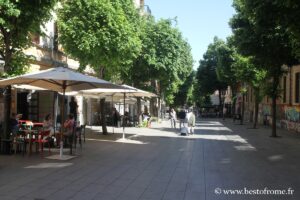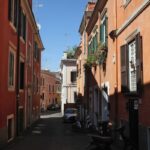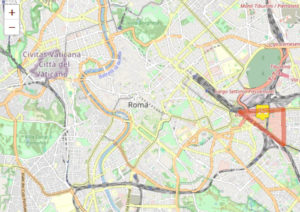A district with a village feel
Pigneto is located to the east of Rome’s historic center, just beyond Porta Maggiore. This neighborhood, which retains the charm of a small village with its low-rise houses of one or two stories, stretches eastward into more eclectic areas, blending 1960s working-class buildings with modest residences.
The heart of the district is bordered by two major roads: Via Prenestina to the north and Via Casilina to the south, forming a lively triangle.
The opening of the Pigneto and Malatesta metro stations on Line C, inaugurated in 2014, made it easier to reach the city center and increased the district’s appeal. However, this growing accessibility also marks the beginning of gentrification, with rising rents and the arrival of more upscale shops.
Since the early 2000s, Pigneto has attracted a young population, including artists, students, and intellectuals, revitalizing its social fabric. This dynamism comes with notable ethnic diversity, with communities from several continents.
The neighborhood hosts a wide range of venues: bars specializing in craft beers, underground clubs, affordable restaurants, independent bookstores like Bookish or Tuba, associations, and cultural spaces such as Hamlet Theatre, Diamante, or the Nuovo Cinema Aquila, reopened in 2011 after years of abandonment. The Via del Pigneto, partly pedestrianized, is home to many of these venues and features a morning market offering fresh produce, just steps from second-hand clothing stalls.
A proletarian and artistic legacy
Bordering the student neighborhood of San Lorenzo, Pigneto shares a working-class history and a past of anti-fascist resistance, particularly active under the Mussolini regime. In the 1950s and 1960s, this former Roman suburb inspired major filmmakers. Pier Paolo Pasolini shot scenes of Accattone (1961) here, while Luchino Visconti and Dino Risi used the area for realistic settings in their works. Today, mural paintings, such as those by the artist Blu on Via Fanfulla da Lodi, stand as a testament to this creative heritage.
Map of the Pigneto district
If you see this after your page is loaded completely, leafletJS files are missing.












